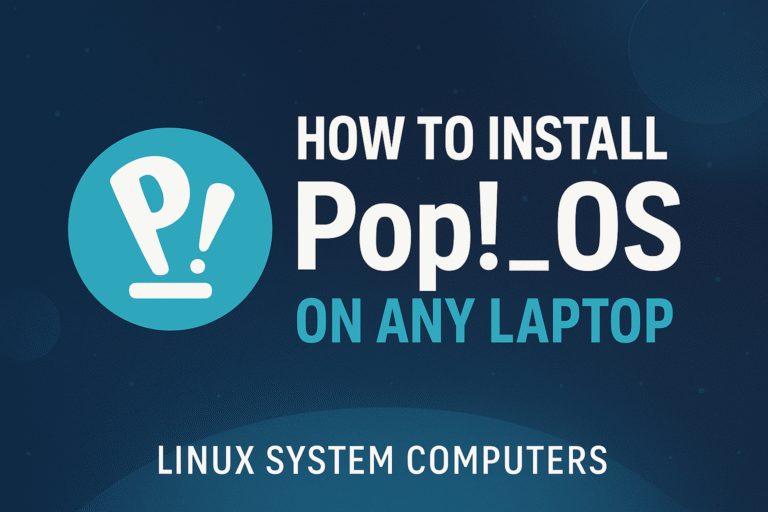Best Virtual Machine Options for Linux on Windows 10 | Get Started Today!
Are you a Windows 10 user who wants to explore the world of Linux? Virtual machines provide a convenient way to run Linux on your Windows 10 system without the need for dual-booting or partitioning your hard drive. In this article, we will explore the best virtual machine options for running Linux on Windows 10, allowing you to get started with Linux today!
1. Oracle VM VirtualBox
Oracle VM VirtualBox is a popular choice for running Linux on Windows 10. It is a free and open-source virtualization platform that allows you to create and manage virtual machines with ease. VirtualBox supports a wide range of operating systems, including various Linux distributions, making it an excellent choice for Linux enthusiasts.
With VirtualBox, you can create a virtual machine, allocate system resources, and install your preferred Linux distribution. It provides seamless integration between the host and guest operating systems, allowing you to share files and folders, use shared clipboard functionality, and even enable drag-and-drop support.
VirtualBox also offers a snapshot feature, which allows you to take a snapshot of your virtual machine at a specific point in time. This feature is handy when you want to experiment with different configurations or software installations without worrying about breaking your system.
2. VMware Workstation Player
VMware Workstation Player is another popular virtualization software that enables you to run Linux on Windows 10. While it offers a paid version with advanced features, the free version, known as VMware Workstation Player, is sufficient for most users.
With VMware Workstation Player, you can create and run virtual machines with ease. It supports a wide range of operating systems, including various Linux distributions, and provides excellent performance and stability. The software also offers features like drag-and-drop support, shared folders, and virtual networking, allowing seamless integration between the host and guest operating systems.
VMware Workstation Player is a great choice for users who require advanced virtualization features and performance. It is widely used by professionals and developers for testing software, running multiple operating systems, and creating virtual development environments.
3. Microsoft Hyper-V
If you are using Windows 10 Pro or Enterprise edition, you have access to Microsoft Hyper-V, a built-in virtualization platform. Hyper-V allows you to create and manage virtual machines on your Windows 10 system, including running Linux distributions.
Hyper-V provides a robust and secure virtualization environment, with features like virtual networking, live migration, and support for high-performance computing. It is well-integrated with the Windows ecosystem and offers excellent performance for running Linux on Windows 10.
While Hyper-V is not as user-friendly as some other virtualization software, it is a powerful option for users who require advanced virtualization capabilities. It is particularly suitable for enterprise environments and developers who need to test software on different operating systems.
4. Parallels Desktop for Windows
If you are a Mac user who also uses Windows 10 through Boot Camp, Parallels Desktop for Windows is an excellent choice for running Linux on your Windows 10 system. Parallels Desktop is a virtualization software specifically designed for Mac users, allowing them to run Windows and other operating systems seamlessly.
With Parallels Desktop for Windows, you can create and run virtual machines with ease. It offers features like Coherence mode, which allows you to run Windows and Linux applications side by side with your Mac applications, and SmartMount, which automatically mounts virtual machine disks on your Mac desktop.
Parallels Desktop for Windows provides excellent performance and integration between the host and guest operating systems. It is a popular choice among Mac users who want to run Linux on their Windows 10 system without sacrificing the Mac experience.
5. QEMU
QEMU is an open-source virtualization platform that provides full system emulation. It allows you to run Linux and other operating systems on your Windows 10 system with excellent performance and flexibility.
QEMU supports a wide range of architectures, including x86, ARM, and PowerPC, making it suitable for running Linux on various hardware platforms. It provides features like dynamic translation, which allows you to run guest code on different host architectures, and hardware acceleration, which improves performance for virtual machines.
While QEMU may not be as user-friendly as some other virtualization software, it offers powerful features and customization options. It is particularly suitable for developers and advanced users who require fine-grained control over their virtual machines.
6. KVM (Kernel-based Virtual Machine)
KVM, or Kernel-based Virtual Machine, is a virtualization module built into the Linux kernel. It allows you to run Linux and other operating systems on your Windows 10 system with excellent performance and stability.
KVM leverages the hardware virtualization extensions available in modern processors, such as Intel VT-x and AMD-V, to provide hardware-accelerated virtualization. This results in near-native performance for virtual machines running on KVM.
To use KVM on Windows 10, you can install a Linux distribution that supports KVM, such as Ubuntu or Fedora, and then create and manage virtual machines using the KVM command-line tools or graphical frontends like virt-manager.
7. Xen Project
Xen Project is an open-source virtualization platform that provides powerful features and performance for running Linux on Windows 10. It is widely used in enterprise environments and cloud computing platforms.
Xen Project allows you to create and manage virtual machines with ease. It provides features like paravirtualization, which improves performance by allowing guest operating systems to communicate directly with the hypervisor, and live migration, which allows you to move running virtual machines between physical hosts without downtime.
To use Xen Project on Windows 10, you can install a Linux distribution that supports Xen, such as CentOS or SUSE, and then create and manage virtual machines using the Xen command-line tools or graphical frontends like XenCenter.
8. Proxmox VE
Proxmox VE is an open-source virtualization platform that combines KVM and LXC (Linux Containers) to provide a powerful and flexible solution for running Linux on Windows 10. It is particularly suitable for users who require both virtual machines and containers.
Proxmox VE allows you to create and manage virtual machines and containers with ease. It provides features like live migration, high availability, and backup and restore, making it suitable for production environments.
To use Proxmox VE on Windows 10, you can install the Proxmox VE distribution, which is based on Debian, and then create and manage virtual machines and containers using the Proxmox web interface or command-line tools.
9. VMware Fusion
If you are a Mac user who wants to run Linux on your Windows 10 system, VMware Fusion is an excellent choice. VMware Fusion is a virtualization software specifically designed for Mac users, allowing them to run Windows and other operating systems seamlessly.
With VMware Fusion, you can create and run virtual machines with ease. It offers features like Unity mode, which allows you to run Windows and Linux applications side by side with your Mac applications, and Snapshots, which allow you to take a snapshot of your virtual machine at a specific point in time.
VMware Fusion provides excellent performance and integration between the host and guest operating systems. It is a popular choice among Mac users who want to run Linux on their Windows 10 system without sacrificing the Mac experience.
10. Docker Desktop
Docker Desktop is a lightweight virtualization platform that allows you to run Linux containers on your Windows 10 system. It is particularly suitable for developers who want to build, test, and deploy applications using containerization.
With Docker Desktop, you can create and manage containers with ease. It provides a simple and intuitive command-line interface and supports a wide range of Linux distributions and software packages.
Docker Desktop offers features like container networking, which allows you to connect containers together and to the host system, and container volumes, which allow you to persist data between container restarts.
11. Vagrant
Vagrant is a tool for creating and managing virtual development environments. It allows you to define your development environment as code and share it with your team, ensuring consistency and reproducibility.
With Vagrant, you can create and manage virtual machines with ease. It provides a simple and intuitive command-line interface and supports a wide range of virtualization platforms, including VirtualBox, VMware, and Hyper-V.
Vagrant allows you to define your development environment using a Vagrantfile, which specifies the virtual machine configuration, software packages, and network settings. This makes it easy to set up and tear down development environments, ensuring that everyone on your team has the same environment.
12. Genymotion
If you are an Android developer who wants to run Linux on your Windows 10 system, Genymotion is an excellent choice. Genymotion is a virtualization platform specifically designed for Android development, allowing you to run Android virtual devices on your Windows 10 system.
With Genymotion, you can create and manage Android virtual devices with ease. It provides a wide range of pre-configured virtual devices with different Android versions and device configurations, making it easy to test your applications on various devices.
Genymotion offers features like screen recording, GPS simulation, and network simulation, allowing you to test your applications under different conditions. It also provides integration with popular development tools like Android Studio and Eclipse.
13. Virtual PC
Virtual PC is a virtualization software developed by Microsoft. While it is no longer actively developed, it is still a viable option for running Linux on Windows 10, particularly for users who prefer a simple and lightweight virtualization solution.
Virtual PC allows you to create and run virtual machines with ease. It provides features like shared folders, which allow you to share files and folders between the host and guest operating systems, and virtual networking, which allows you to connect virtual machines together and to the host system.
While Virtual PC may not offer the advanced features and performance of some other virtualization software, it is a straightforward option for users who want to run Linux on their Windows 10 system without any complexities.
14. Bochs
Bochs is an open-source virtualization platform that provides full system emulation. It allows you to run Linux and other operating systems on your Windows 10 system with excellent flexibility and customization options.
Bochs emulates the x86 architecture, allowing you to run guest operating systems designed for x86 processors. It provides features like dynamic translation, which allows you to run guest code on different host architectures, and support for various hardware devices.
While Bochs may not offer the performance of some other virtualization software, it is a powerful option for users who require fine-grained control over their virtual machines and want to experiment with different hardware configurations.
15. XCP-ng
XCP-ng is an open-source virtualization platform based on the Xen Project. It provides a powerful and flexible solution for running Linux on Windows 10, particularly for users who require advanced virtualization features and performance.
XCP-ng allows you to create and manage virtual machines with ease. It provides features like live migration, high availability, and support for storage and network virtualization, making it suitable for production environments.
To use XCP-ng on Windows 10, you can install the XCP-ng distribution, which is based on CentOS, and then create and manage virtual machines using the XCP-ng Center or command-line tools.
16. OpenVZ
OpenVZ is an open-source containerization platform that allows you to run Linux containers on your Windows 10 system. It provides a lightweight and efficient solution for running multiple isolated Linux environments on a single host.
OpenVZ allows you to create and manage containers with ease. It provides features like container templates, which allow you to create containers based on pre-configured templates, and live migration, which allows you to move running containers between physical hosts without downtime.
To use OpenVZ on Windows 10, you can install a Linux distribution that supports OpenVZ, such as CentOS or Ubuntu, and then create and manage containers using the OpenVZ command-line tools or graphical frontends like Virtuozzo.
17. LXD (Linux Containers)
LXD, or Linux Containers, is a containerization platform that allows you to run Linux containers on your Windows 10 system. It provides a lightweight and secure solution for running multiple isolated Linux environments on a single host.
LXD allows you to create and manage containers with ease. It provides features like container snapshots, which allow you to take a snapshot of a container at a specific point in time, and live migration, which allows you to move running containers between physical hosts without downtime.
To use LXD on Windows 10, you can install a Linux distribution that supports LXD, such as Ubuntu or Fedora, and then create and manage containers using the LXD command-line tools or graphical frontends like LXDUI.
18. Virtuozzo
Virtuozzo is a commercial containerization platform that allows you to run Linux containers on your Windows 10 system. It provides a powerful and secure solution for running multiple isolated Linux environments on a single host.
Virtuozzo allows you to create and manage containers with ease. It provides features like container templates, which allow you to create containers based on pre-configured templates, and live migration, which allows you to move running containers between physical hosts without downtime.
Virtuozzo offers additional features like resource management, which allows you to allocate system resources to containers, and high availability, which ensures that containers are automatically restarted in case of a failure.
19. GNOME Boxes
GNOME Boxes is a lightweight virtualization platform that allows you to run Linux on your Windows 10 system. It is designed to be simple and user-friendly, making it an excellent choice for users who want a hassle-free virtualization experience.
With GNOME Boxes, you can create and run virtual machines with ease. It provides a simple and intuitive graphical interface and supports a wide range of operating systems, including various Linux distributions.
GNOME Boxes offers features like automatic installation, which allows you to install operating systems with a few clicks, and automatic updates, which ensure that your virtual machines are always up to date.
20. Multipass
Multipass is a lightweight virtualization platform that allows you to run Linux on your Windows 10 system. It is designed to be simple and efficient, making it an excellent choice for users who want a lightweight virtualization solution.
With Multipass, you can create and manage virtual machines with ease. It provides a simple command-line interface and supports a wide range of operating systems, including various Linux distributions.
Multipass offers features like cloud-init support, which allows you to configure virtual machines using cloud-init scripts, and automatic updates, which ensure that your virtual machines are always up to date.
In conclusion, there are several excellent virtual machine options available for running Linux on Windows 10. Whether you are a Linux enthusiast, a developer, or an enterprise user, you can find a virtualization platform that suits your needs. From free and open-source options like Oracle VM VirtualBox and QEMU to commercial solutions like VMware Workstation Player and Parallels Desktop for Windows, you have a wide range of choices. So, get started today and explore the world of Linux on your Windows 10 system!
FAQs
1. Can I run Linux on Windows 10 without dual-booting or partitioning my hard drive?
Yes, you can run Linux on Windows 10 using virtualization software. Virtual machines provide a convenient way to run Linux on your Windows 10 system without the need for dual-booting or partitioning your hard drive.
2. Which virtual machine option is the best for running Linux on Windows 10?
The best virtual machine option for running Linux on Windows 10 depends on your specific needs and requirements. Oracle VM VirtualBox, VMware Workstation Player, and Microsoft Hyper-V are popular choices that offer a wide range of features and performance. It is recommended to try out different options and choose the one that suits your needs the best.
3. Can I use virtual machines for software development and testing?
Yes, virtual machines are commonly used for software development and testing. They provide a controlled and isolated environment for developing and testing software, allowing you to experiment with different configurations and software installations without affecting your host system.


